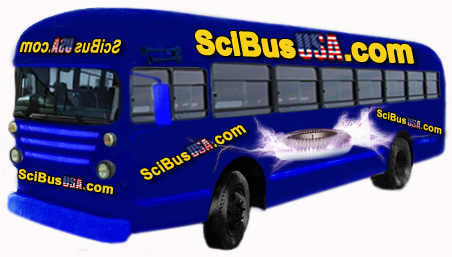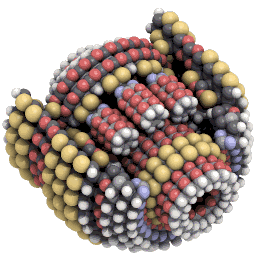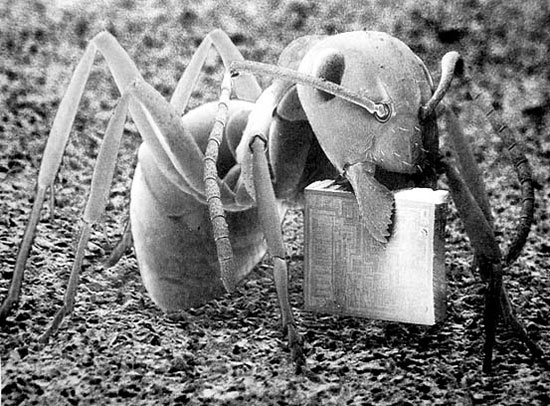
Industry News
Isn't that Impossible?
This is the same thing that microscopic cellular biologicals do; rip appropriate supplies apart into what they need & rebuild the materials.
If you're still saying no,
you'd have to argue with Richard Feynman, one of the Manhattan Project physicists,
who Einstein loved to argue with, because he loved Physics, not kowtowing to a celebrity name.
This is the Nobel prize winner who was given a Presidential Commission on the
Space Shuttle Challenger Accident (1986).
His 1965 Nobel prize was in Quantum electrodynamics; the easiest summation is the wobbles of how electron orbits move in relativity to their atomic nuclei.
http://demonstrations.wolfram.com/FeynmansWobblingPlate/
Feynman offered $1000 prizes for two of his challenges in
nanotechnology, claimed by William McLellan and Tom Newman, respectively. He was also one of the first scientists to conceive
the possibility of quantum computers.
it was his former graduate student and collaborator Albert Hibbs who originally suggested to him (circa 1959) the idea of a medical use for Feynman's theoretical micromachines (see nanotechnology). Hibbs suggested that certain repair machines might one day be reduced in size to the point that it would, in theory, be possible to (as Feynman put it) "swallow the doctor". The idea was incorporated into Feynman's 1959 essay There's Plenty of Room at the Bottom
A defining moment in the history of molecular-scale technology was a 1959 speech at the California Institute of Technology by Nobel Laureate physicist Dr. Richard P. Feynman. "There's Plenty of Room at the Bottom," he declared in his discussion of the possibilities of molecular-scale engineering. To spur work in that direction, he offered $1,000 prizes from his personal funds to the first person to construct a working electric motor 1/64 inch or less on a side, and to the first person to produce written text at 1/25,000 scale (the size required to print the entire Encyclopedia Britannica on the head of a pin).
The motor prize was claimed in 1960 by an engineer who found a way to construct a very small motor using conventional mechanical techniques. Dr. Feynman had unfortunately set the size limits slightly too large to require breakthrough technology. He paid anyway. The printing challenge took longer; but in 1985 a Stanford University graduate student named Thomas Newman reproduced the first page of Charles Dickens' novel, A Tale of Two Cities, on a page measuring only 1/160 millimeter on a side (20 times smaller than the human eye can see), using electron beam lithography. Dr. Feynman paid that prize enthusiastically, since it had produced technological advance.
http://cssutton.edublogs.org/category/school-stories/
http://cssutton.edublogs.org/2010/04/12/loving-richard-feynman-by-penny-tangey/
He begins working calculus problems in his head as soon as he awakens.
He did calculus while driving in his car, while sitting in the living room, and while lying in bed at night.
—Mary Louise Bell divorce complain
Feynman has a minor acting role in the film Anti-Clock. He is credited as “The Professor.
http://www.foresight.org/SciAmDebate/SciAmLetters.html#anchor378653
From: Carl Feynman
Newsgroups: sci.nanotech
Subject: Re: S.A. Article on Nanotech
Date: 6 Apr 1996 15:28:38 -0500
Organization: Method Software, Inc.
Message-ID: 4k6k5m$lfd@foglet.rutgers.edu>
Here's a letter I sent to the editors of Scientific American a couple of weeks ago regarding the article on nanotechnology. We'll see if they print it.
----Begin quoted material----
The Editors
Scientific American
415 Madison Ave.
New York
NY 10017-1111
Dear Editors:
I was dismayed to read in your April 1996 issue ("Waiting for Breakthroughs") an extended quotation from Richard Feynman's essay
"Cargo Cult Science" used as a critique of nanotechnology. I am sure he would have found such misuse of his idea quite unreasonable. I should know, because I talked with him at length about the prospects of nanotechnology.
As the article itself points out, Richard Feynman saw no basis in physical laws that would preclude realization of the concepts of nanotechnology. To claim that nanotechnology is cargo cult science
because its proponents analyze the capabilites of devices not yet constructed is as absurd as to say that astronautics was cargo cult science before Sputnik.
Richard Feynman did not regard setting "stretch" technological goals as cargo cult science. Quite the opposite. In the course of his 1958 talk in which he proposed manipulating atoms, he offered cash prizes from his own financial resources for breakthrough achievements in working at a very small scale. If he were still alive, I think that he would be pleased to have his name associated with a large cash prize that seeks to accelerate the realization of one of his most exciting ideas. That is why I have participated in defining the conditions for winning the Feynman Grand Prize, and have agreed to naming the prize in his memory.
http://www.foresight.org/GrandPrize.1.html
http://www.foresight.org/GrandPrize.2.html
--LoTs of different Science Contests
Sincerely,
Carl Feynman
Method Software Inc.
Acton, MA
(The writer is a computer scientist and the son of physicist Richard Feynman.)
----End quoted material----
--Carl Feynman
Chief Engineer carlf@method.com
Method Software Inc. (508)635-9238
1 Gregory Ln., Acton MA 01720
The holy grail of nanotechnology is microscopic robotics, capable to
cancer search & destruction & cellular repair.
Nanotechnology is the marriage of Physics, Magnetics, Electronic,
Mechanical & Chemical engineering,
powered by Brownian Motion or sugar consumption.
Cancer Elimination & Life Extension: Museum introductions to Nanotechnology
Many of the laws we are used to in the macro-scale world, change greatly in the microscopic, as we build more upon the atomic level than the molecular/cellular level.
Running the entire mechanism (along with Programing) mainly reflects
upon the mechanical skills of Watchmaking, updated in surprising ways,
such a mechanical memory arrays written into diamond tablets.
Create your own web pages in minutes...
MentorsAcrossAmerica.com Cincinnati, OH (513) 436-4724


.jpg)
